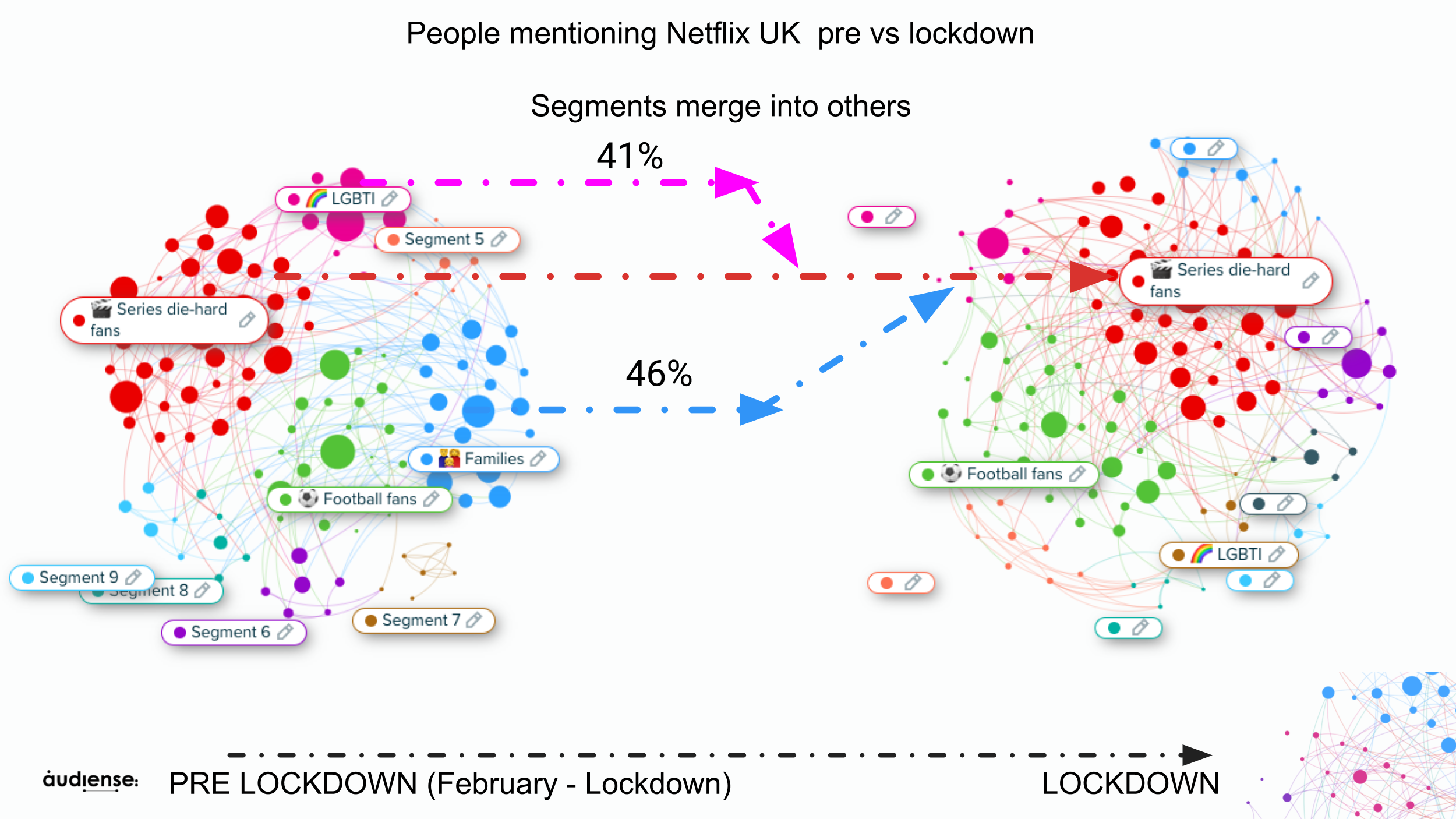Understanding cultural shifts by enriching social listening
How did the 2020 lockdowns affect the emergence of a new context in certain consumption habits and the evolution of audiences? The conversation surrounding Netflix in the UK increased considerably; but beyond the increase in volume, audience intelligence as a complement to social listening has allowed us to discover the cultural and consumer changes that have transformed the segments of the audience behind that conversation.
In our interview with Nisa Bayindir, the consumer psychologist raised the need to not only analyze social conversations but also to identify conversational patterns and relationships generating groups of online communities. Social listening, she went on to say, allows marketing and market research professionals to stay on top of developments and their impact on people, and to recommend communication tactics to their clients so they can better direct their strategy in a better-informed fashion.
Situations, that are as exceptional as those that occurred globally in the last couple of years, have focused on the importance of social data at a time when consumers were more hyperconnected than ever. But this social data needs some contextualization to be able to give a complete and richer picture of the audiences.
Discovering who the individuals are behind a conversation is key to being able to know and understand what those audiences are like and the different groups that compose them. From there, audience intelligence provides insights into these segments that outline the common and distinctive characteristics of the people that comprise them.
This approach to social listening, as part of the contextualization of audiences for their knowledge and understanding, beyond the importance it has gained during this exceptional situation, will play a fundamental role in the near future of marketing and business.
As Carlos Serra, COO of Audiense, explains "with the disappearance of third-party cookies, contextual advertising (and communication) is coming to a place." Audience intelligence platforms like Audiense provide you with key insights about audiences and the segments that make them up, including the interests and affinities of those consumer groups towards brands, organizations, influencers, etc. And these interests and affinities generate that context about the needs and circumstances that surround audiences, critical information so that brands can generate optimal strategies and messages.
The Netflix UK case, before and during the lockdown
The combination of social listening with Audiense' audience intelligence allowed us to observe the transformation of the audience generating conversations of Netflix UK pre-lockdown, and those during the lockdown.

After analyzing the audience that participated in the conversation about Netflix UK during the period between February and the start of the lockdown in the United Kingdom, the main segments identified were: Series die-hard fans (red), Football fans (green), families (blue) and LGBTI (pink). On the right, in the image above, the most unique affinities (compared to other segments) of series lovers group are shown.
Later, the audience that mentioned Netflix UK from when the lockdown started was identified, and an audience intersection analysis revealed how the segments that made up the initial audience have evolved.

41% of individuals in the LGTBI segment have joined the group of large series consumers, as has happened with 46% of consumers who were part of the family segment.
This highlights how consumer habits and other cultural aspects have changed, leading to a more interconnected community around the consumption of content on Netflix in the UK. With this information, and understanding what are the most distinctive insights of this new group of heavy-consumers of streaming entertainment content, Netflix UK (and other platforms) would have the necessary weapons to develop a strategy that fits current reality and would be able to adjust it as circumstances develop.
Photo by Alexis Fauvet on Unsplash.







